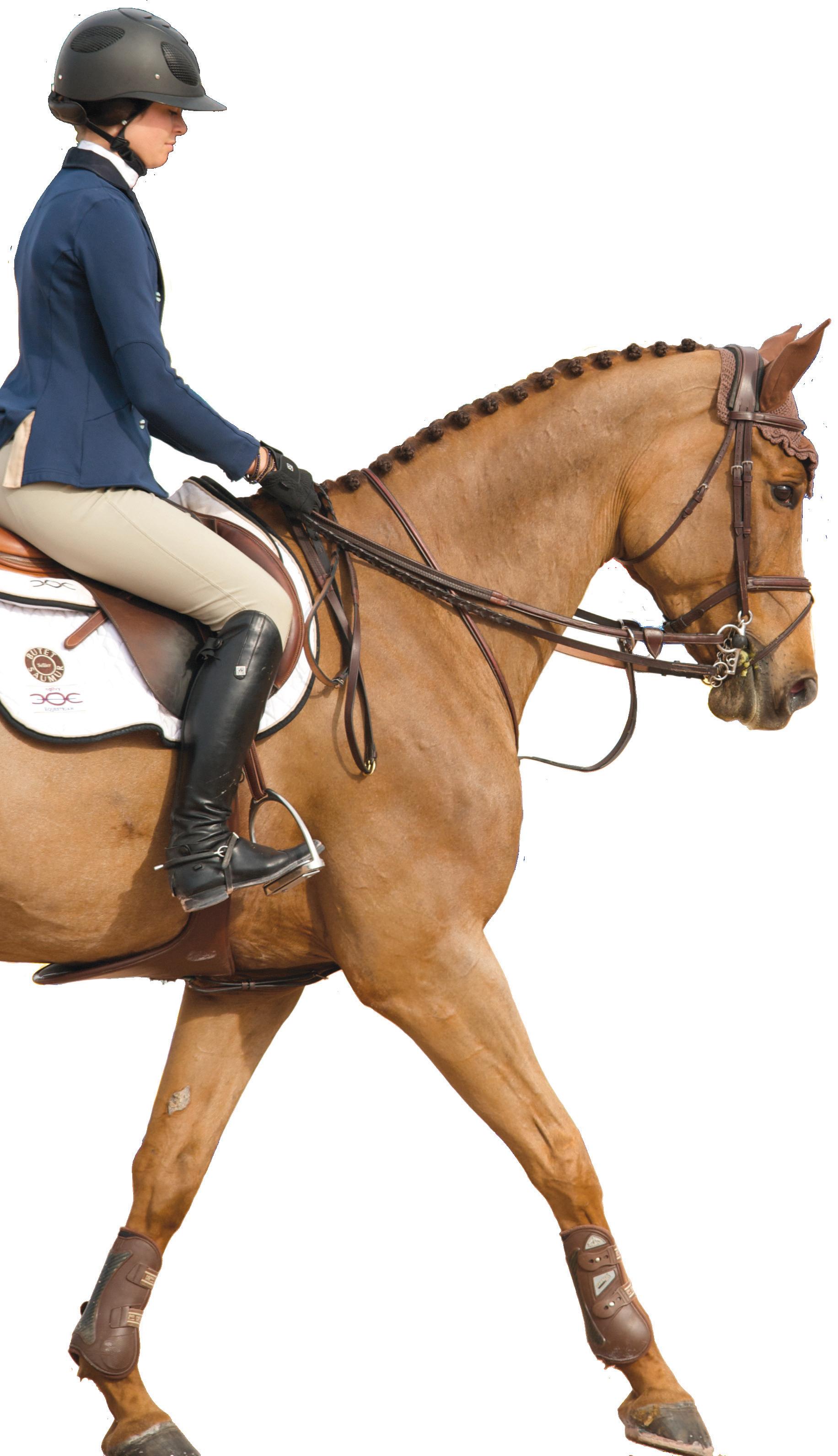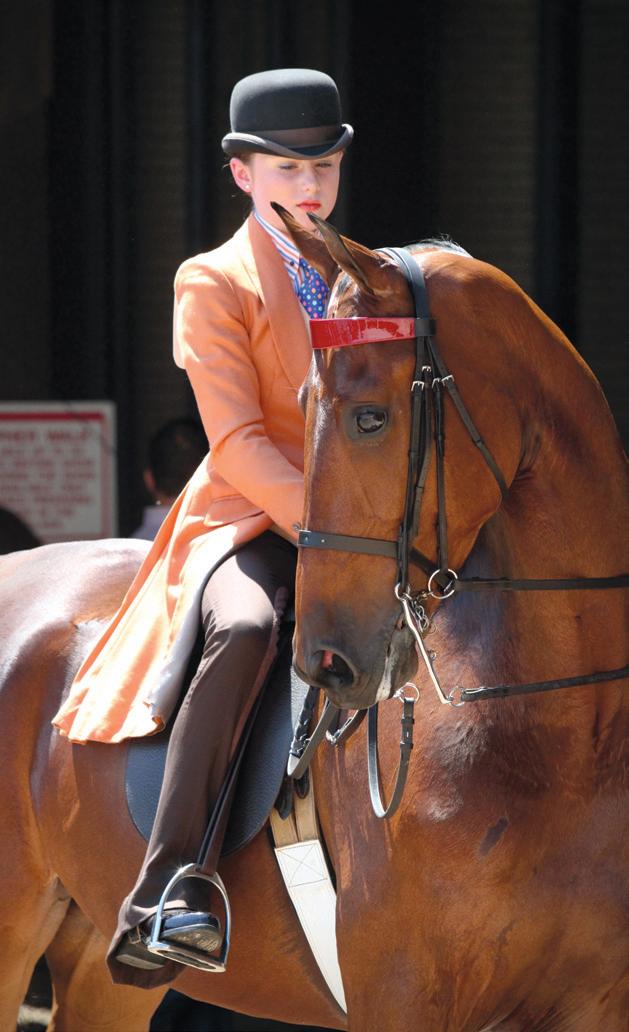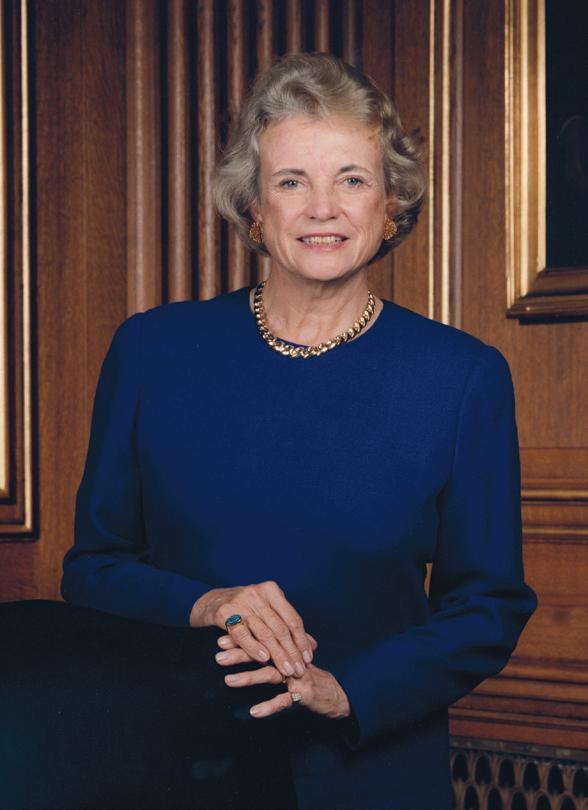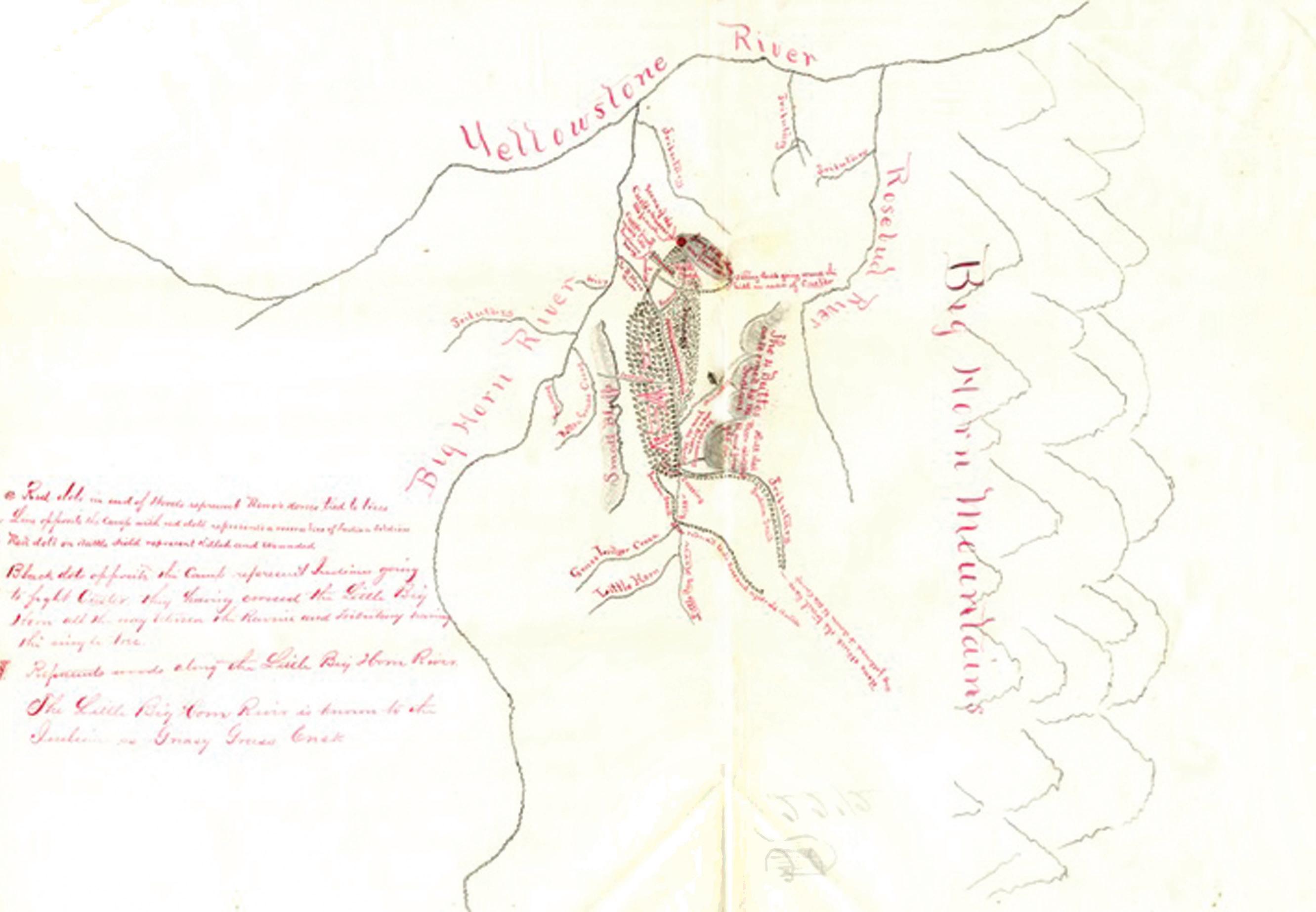
13 minute read
Ask the Instructor
Q & A
Ask The Instructor
Advertisement
QCan you tell me the best way to help me find my balance on a horse? work on your balance. Give it a try; just be sure you don’t rely on your Sit tipped towards your zipper Ribs up Julie Kidrowski is a graduate of William Woods University, with nearly a decade of experience teaching beginner through advanced lessons. This month she discusses balance. To submit your question, please email her at Julie@horseandacademy.com handlebars to get up off Shoulders down A. Riding is more about of the bike when posting. I also ask riders to a good sense of balance The more “tradi- find their weakest point. than it is muscles! Keep tional” way to improve Some of the common in mind; most riders balance is through old- faults are: leaning too far develop a solid sense of fashioned exercise. You back, slouching in the ”“ balance over time. Lunge line lessons are a great way to force your balance. If you have a safe horse for lunge lessons and a good horseman on the ground, you’ll be balanced in no time. Even when lunge line lessons aren’t an option, practicing balance is still an important part of your training. Just for fun, I have asked some of my equitation riders to pracmight practice squats and lunges, standing on one leg, different Pilates movements, climbing up steps, and even using an exercise ball to do crunches and inner thigh squeezes. Get a DVD, take a class, or ask someone to walk you through the proper form for the exercises you want to try. Good form is the key to your progress and safety. When you’re riding, saddle, feet too far forward, and hey, put your heels down! Do any of those ring a bell? Really listen to what your instructor tells you repetitively. She is most likely pointing out your weakest area. If you don’t have an instructor, figure out what part of your body “wiggles” the most. If it’s your legs, start at your foot and work through the checklist. The gener… most riders develop a solid sense of balance over time. tice patterns using their think about breaking al rule of thumb for a bikes. The rules were your body into a “bal- good solid seat is “lower they had to post as the ance checklist.” Here is body back and upper pattern directed, change the one we use: body forward.” diagonals as intended, Toes up Good balance doesn’t and of course hit their Heels down come overnight, but it points precisely! This is Weight in the arch of will come. Keep practican entertaining way to your foot ing, and have fun! n learn patterns while you Knees down and bent
The Newest Voice for the Horse Riding Industry Publisher
Access Publishing Group
Executive Editor
Nancy Norton
Managing Editor
Julie Kidrowski
Print Design & Production
Deanna O’Byrne
Web Worker Bees
Chet Davis Megan Ruth
World’s Best Editorial Advisors
Emma, Emma, Ezri, Faith, Hallie, Lauren, Macie, Madison, Mary, Noah, Ryenn, Sammie, & Sarah
Incomparable Staff Writers
Christy Chajon, Jackie Emory, Faye Hemze, & Michelle Theisen
Subscriptions
subscriptions@horseandacademy. com
Advertising
sales@horseandacademy.com
Online/Submissions
www.horseandacademy.com
Horse & Academy Magazine
@HorseAndAcademy
Horse & Academy Magazine
2001 Grand Boulevard #501 Kansas City, Missouri 64108 Ph: 816.423.8888 Fx: 816.842.1219
Copyright © Horse & Academy Magazine 2012. The Magazine and its contents may not be reproduced in any form without the expressed legal consent of the copyright owner. This magazine is published every month by Access Publishing Group, which is located at 2001 Grand Blvd., Suite 501, Kansas City, MO 64108, and is distributed nationally free of charge to selected sites. If interested in distributing Horse & Academy Magazine at your place of business, please contact publisher at the address, above. Annual subscriptions are available at the subscription rate of $15 for 12 issues. Pricing is subject to change. To subscribe or change an address, please visit our website at www.horseandacademy.com or email us at subscriptions@horseandacademy.com.
Submissions of relevant material by you or your child are welcomed and accepted online at www. horseandacademy.com. As a parent or guardian you certify that your child’s submission is original, and assign all rights for its use to Horse & Academy Magazine. The magazine shall have the right to use the submission, but it may also decline to do so. Pursuant to the Children’s Online Privacy Pro-
tection Act and to ensure the safety of underage children, those children interested in submitting material must have a parent or guardian send an email autho-
rization. Please visit Horse & Academy Magazine at www.horseandacademy.com.
WHAT IS A CHAMPION?
The Amazing Story of Neville Bardos
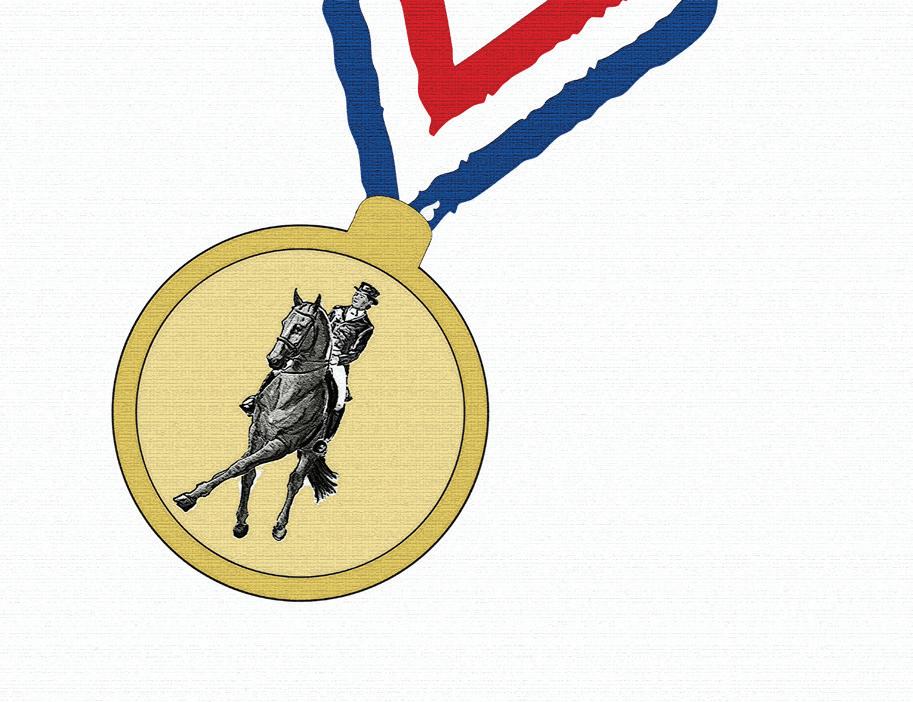
The United States Equestrian Federation named its short-listed Olympic three-day event team for the 2012 London
Olympics, and Neville Bardos is on the list. You won’t believe his story.
By the time he was three, Neville Bardos’ unimpressive racing career was over. He was put up for sale and it looked like he would end at the slaughterhouse. Then along came
Boyd Martin, an Australian rider and trainer who saw something in the Australian thoroughbred, and bought him for $850. After getting off to a rocky start, Neville went on to place 1st at the Melbourne CCI in 2006, 1st at the Fair Hill
CCI in 2009 and 4th at the Rolex Kentucky CCI in 2010. Neville’s comeback was looking good.
By this time Neville,
Boyd, and Boyd’s wife
Silva had moved to the
United States. Boyd and
Neville were highly ranked by the FEI, with hopes for the future.
Then came the late night call on Memorial Day 2011 – the barn Neville lived in with 10 other horses was burning.
By the time Boyd arrived Neville had been trapped inside the blaze for close to an hour. Boyd

Boyd Martin and Neville Bardos. Photo provided by Mike McNally.
ran past the firefighters and led Neville out of the barn just minutes before the roof collapsed. Fortunately, firefighters had already rescued four other horses from the fire.
Neville was almost dead, with extreme carbon monoxide levels and terrible injuries to his lungs and throat from the smoke. He was taken to a veterinary hospital and treated daily in a hyperbaric oxygen chamber. Five weeks after the fire that almost killed Neville, Boyd got on him for a walk that quickly turned into a canter. His rapid recovery left everyone involved in his care amazed. Neville was coming back; there was no doubt about it.
Three months after the fire, Neville and Boyd finished 7th at the Burghley Horse Trials in England, one of the toughest three day competitions in the world. This put Neville back on the path to the 2012 Olympic Games. Along the way he was also named the US Equestrian Federation International Horse of the Year for 2011. Not bad for a horse that had been uncomfortably close to death – twice.
The story isn’t over yet! At press time, Neville and Boyd continue to train and compete for the Olympics. The U.S three-day event team will be named on July 2. We will keep you posted on facebook!
Best of luck to Boyd and Neville from all your friends at Horse & Academy. Go Team USA! n
by Nancy Norton, Executive Editor
ARE YOU GOING TO LONDON TOWN?
2012 Equestrian Olympics in London
The Equestrian schedule at the 2012 London Olympics will be: Eventing: July 28 – July 31 Dressage: August 2 – August 9 Jumping: August 4 – August 8 You can catch all the action on NBC.
by Nancy Norton, Executive Editor
This summer, Olympic organizers predict there will be 200 equestrians, along with their horses, in London’s Greenwich Park for the 2012 Olympic Equestrian Games. These athletes will be riding to win one of only six gold medals awarded over the entire twelve day Equestrian competition. Each of the three disciplines gets a chance at only two gold medals; one for its team event and one for its individual event.
The three disciplines offer very different challenges to both riders and horses. The format of both team and individual Eventing features dressage, cross-country, and a grandstand jumping finale. Scores are cumulative across all three phases, with the best total determining the Individual and Team winners.
Dressage is based on a series of movements (patterns) the horses and riders perform known as a Dressage test. These tests are performed before a panel of seven judges, who award scores for individual movements as well as for the overall routine. Dressage consists of both a Team event and an Individual event that are conducted at the same time, and a rider’s score for a specific test will apply to both events. While Team event medals are decided on the total of scores in the Grand Prix and the Grand Prix Special, the Individuals with the best scores go on to the Grand Prix Freestyle based on their performance in the Grand Prix Special only. It is how riders perform in the Grand Prix Freestyle that determines who gets the medals in the Individual event.
Compared to the complexity of Dressage, the format of Show Jumping sounds almost, well, like a walk in Greenwich

Olympic Facts
Women first participated in Olympic Eventing at the 1952 Helsinki Games.
Men and women compete together in all equestrian disciplines. This is the only Olympic sporting event where they compete together! At the 2008 Beijing Olympic Games, Germany led the gold medal count, taking home three golds, including both the Dressage and the Eventing team competitions.
Hans Gunter Winkler is the only jumper to ever win five Olympic gold medals, and one of only four athletes to compete and win medals at six games.
Reimer Klimke’s six gold and two bronze Dressage medals over six different Games make him the most decorated rider in Olympic history.

A panorama of the view from Greenwich Park, with the Queen’s House in the foreground. The Old Royal Naval College and Docklands are in the background. Photo: Bill Bertram


Park. In Show Jumping, both Team and Individual riders and their horses are timed on the course as they jump over obstacles like parallel rails, triple bars, water jumps and simulated stone walls. The medals go to those Team and Individual riders and horses that finish with the fewest penalties in the fastest time.
For more information: www.london2012.com/ equestrian. n
Did You Know?
Greenwich Park is London’s oldest Royal Park. It dates back to 1433, and is home to the Prime Meridian Line. The National Maritime Museum is its neighbor.
People first settled the Park grounds thousands of years ago. Early stone tools as well as the remains of Roman buildings have been discovered at Greenwich Park.
Greenwich Park covers almost 183 acres. It even includes a Wilderness Deer Park, where you can see Red and Fallow deer, foxes, birds, bats and ancient trees.
King James I gave the park to his wife, Anne, as an alleged apology after swearing at her in public when she accidently shot one of his favorite dogs.
2012 London Olympics: Summer games Schedule
Opening Ceremony.............. July 27 Archery ............. July 27 – August 3 Athletics ............ July 23 – August 12 Badminton ........... July 28 – August 5 Basketball .......... July 28 – August 12 Beach Volleyball ....... July 28 – August 3; . . . . . . . . . . . . . . . . . . . . . . . August 5 – 9 Boxing ............. July 28 – August 12 Canoe Slalom ......... July 29 – August 2 Canoe Sprint ..............August 6 - 11 Cycling – BMX .............August 8 - 10 Cycling – Mountain Bike ..... August 11 - 12 Cycling – Road ......July 28 – 29; August 1 Cycling - Track .............August 2 - 7 Diving.... July 29 – August 1; August 3 - 11 Equestrian ...... July 28 – 31; August 2 - 9 Fencing ............. July 28 – August 5 Football ........ July 25 – 26; July 28 – 29; . . . . . . . . . . July 31 – August 1; August 3-4; . . . . . . . . . . . . . August 6 – 7; August 9 - 11 gymnastics – Artistic .... July 28 – August 2; . . . . . . . . . . . . . . . . . . . . . . . .August 5 - 7 gymnastics – Rhythmic ........ July 9 - 12 Handball ............ July 28 – August 12 Hockey ............. July 29 – August 11 Judo................ July 28 – August 3 Modern Pentathlon......... August 11 - 12 Rowing.............. July 28 – August 4 Sailing ............. July 29 – August 11 Shooting............. July 28 – August 6 Swimming . July 28 – August 4; August 9 - 10 Synchronized Swimming ..... August 5 – 7; . . . . . . . . . . . . . . . . . . . . . . .August 9 - 10 Table Tennis .......... July 28 - August 8 Tae kwon do ..............August 8 - 11 Tennis .............. July 28 – August 5 Trampoline ................August 3 - 4 Triathlon ................August 4 and 7 Volleyball ........... July 28 – August 12 Water Polo .. July 29 – August 10; August 12
Weightlifting July 28 – August 1; August 3 - 7
Wrestling ................August 5 - 12 Closing Ceremony ............ August 12
For more Olympics information: www.london2012.com
INDUSTRY INSIDER :SPECIAL EDITION
Reed Kessler: Headed to 2012 London
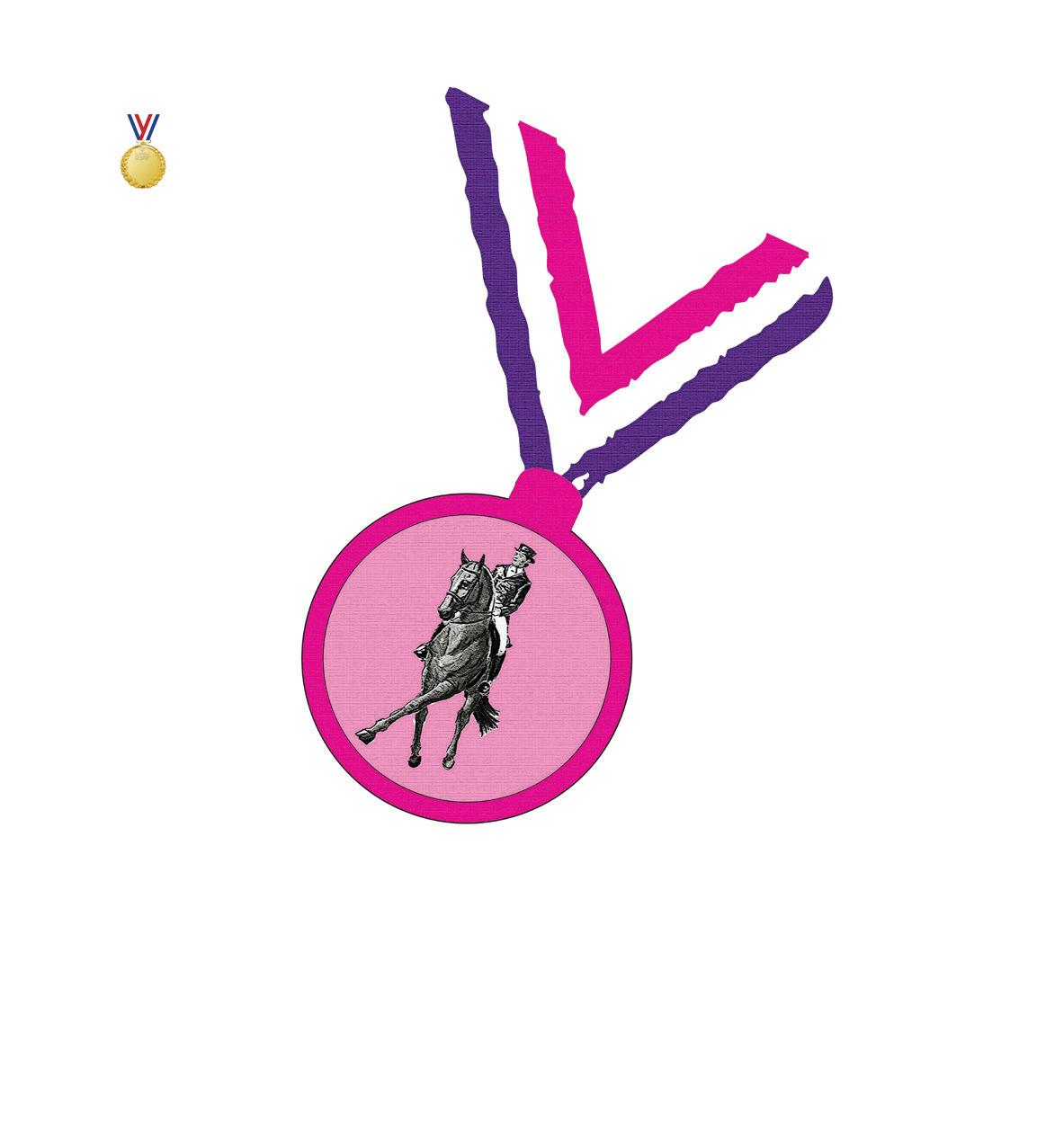
Reed Kessler took time out from her equestrian training schedule to answer Horse & Academy’s questions about life as an Olympic contender. Since then, Reed and Cylana have been selected to represent the U. S. Olympic show jumping team at the 2012 London Games. Horse & Academy is rooting for you, Reed! Go Team USA!
By Nancy Norton, Executive Editor
When did you start riding?
I was 6 months old — hard to believe, I know! My parents put me in a basket on my pony Shasha, tied my stuffed animals in trees, and that’s how I learned to steer.
You ride two horses, Cylana and Mika. How are they different?
I’d say they’re just about polar opposites! Mika came to us very nervous a few years ago and through coddling and spoiling, he has become much more confident. He wants to be loved and played with. Cylana, on the other hand, is not so cuddly in the barn. She is happiest when she is at the ring competing. Any time she spends in her stall is torture; she just wants to show. She can be a real land shark at home. Even though she’s only been doing 1.60-meter jumps for a few months now, she has no idea that they are any bigger or more difficult than what she’s done before.
What is your training schedule?
We don’t have a set training schedule. It depends on the time of year, what show we’re heading to next, where we’ve just come from, and which horse it is. To prepare for Kentucky, my trainer Katie Prudent gave me a lesson on each horse over some small exercises mainly to get me sharp. Then came a day of flatwork, then a day jumping a little bit bigger — around 1.30-meters, to ease the horses into jumping more significantly, followed by another day of flatwork, with one last day over a large course so the horses knew we were about to compete.
Do you do any cross training?
Yes, in Florida I have a personal trainer three nights a week. When “Reed and Cylana. Photo courtesy Jack Mancini, www.manciniphoto.com ” I’m on my own, I try to hit the gym every other day. Is it hard to keep up with school? It can be difficult but luckily I go to a fantastic school in Manhattan called Professional Children’s School. It’s a school for “kids with continued, see ‘kessler’ page 24 Cylana… is happiest when she is at the ring competing.
